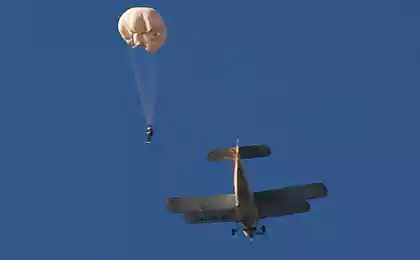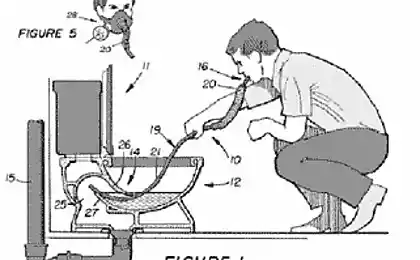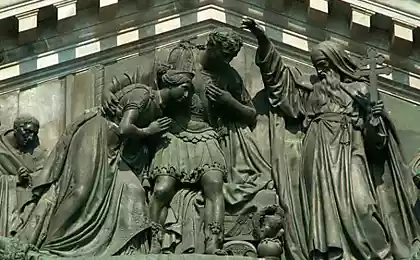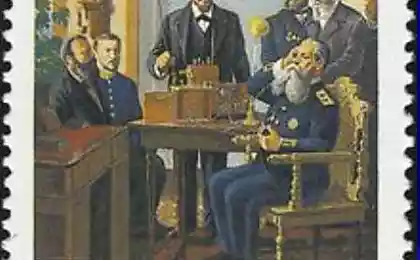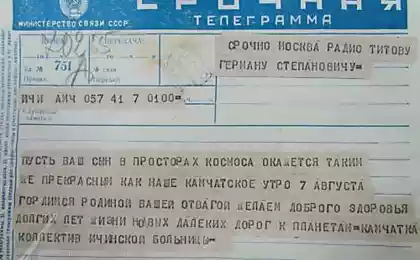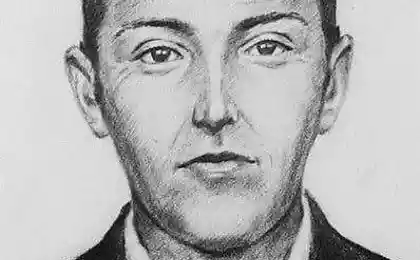815
Russian inventor of the parachute (8 photos)
Gleb Kotelnikov with a test dummy "Ivan Ivanovich»
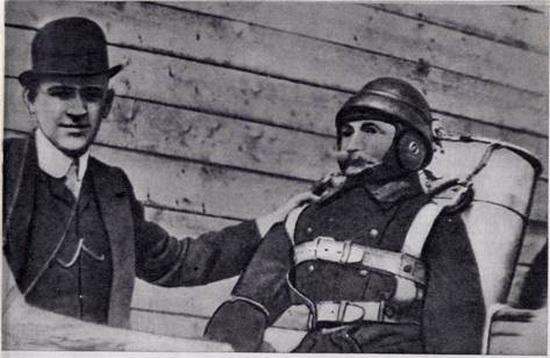
Gleb Kotelnikov (1872-1944) was born in St. Petersburg in the family of professor of mechanics and higher mathematics. After graduating from the Kiev Military School in 1894 and served for three years, he went to the reserve. A few years served as an excise officer in the province, fascinated amateur theater. In 1910 Kotelnikov returned to St. Petersburg and entered the actor in the troupe of the People's House on the Petersburg side.
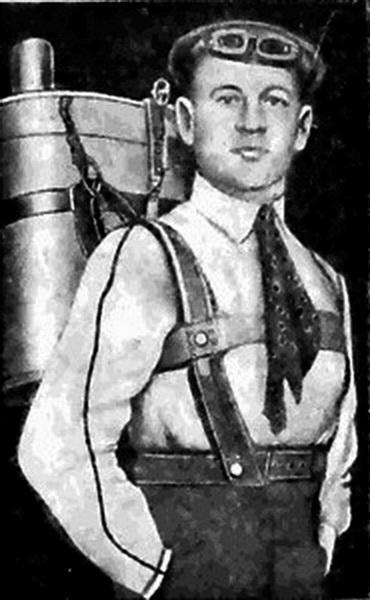
Kotelnikov invented with his parachute
In the same year, inspired by the death of Leo Matsievich aviator, he engaged in the development of aviation parachute. 10 months of hard work have led to the creation of the first Nyquist world's knapsack parachute free action. In December 1911 Kotel'nikov tried to register it in Russia, but for unknown reasons could not get a patent. Trying to register the invention in France was more successful - 20 March 1912 Kotelnikov received a patent for a parachute PK1 (Russian, Nyquist, 1st model).
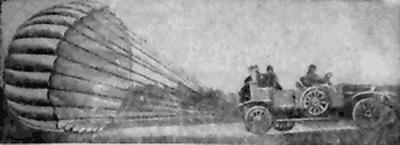
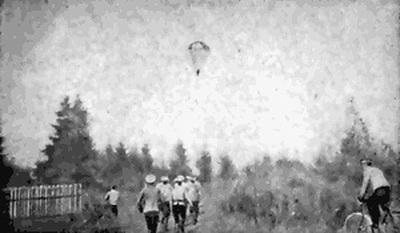
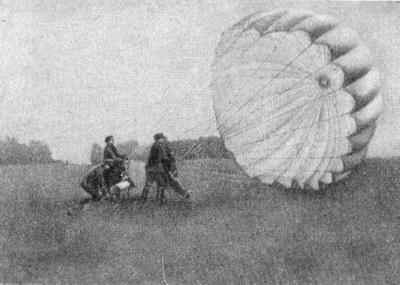
The first demonstration testing took place in 1912. On June 2, a racing highway at Tsarskoye Selo, a test was conducted with the help of car Russo-Balt, which is clocked at full speed, after which the parachute opened Kotelnikov, forced the car to stall the engine. Thus Kotelnikov also became an inventor and a braking parachute. June 6 PK1 was tested in the camp near the village of aeronautics school Salizi at Gatchina. The dummy weighing about 80 kg, fixed on him parachute dropped from different heights from the balloon. All the shots were successful, but the Chief Engineer's Office of the Russian army has not taken Nyquist parachute into production for fear that it would encourage pilots to leave the airplane at the slightest fault.
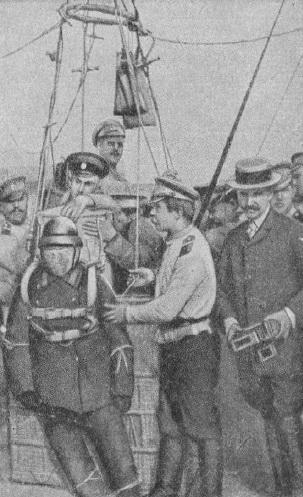
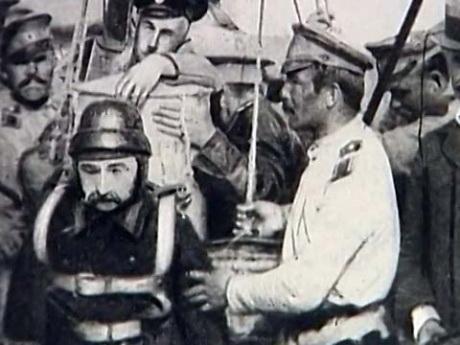
In winter 1912-1913, the business partner of Nyquist Wilhelm Lomah parachute PK1 presented at the competition in France. January 5, 1913 in Rouen student Petersburg Conservatory Vladimir Ossowski from the bridge over the Seine 60 m high made the first parachute jump from a knapsack. The invention Nyquist has been recognized in Europe, where from mid-1913 began its widespread copying on the basis of two samples PK1 sold Lomahom.
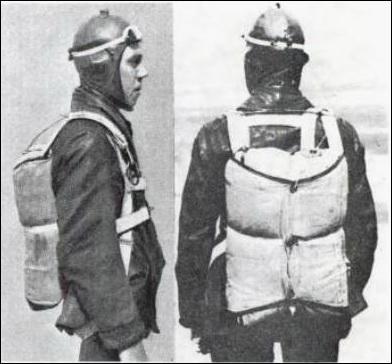
With the onset of World War II Russian military department recalled the invention of Nyquist and ordered him 70 parachutes for airplanes "Ilya Muromets". During the war PK1 established itself with the best hand. In addition, Kotelnikov was commissioned to design a parachute, which would lower from the board 'Ilya Muromets' heavy gun after it will make the shots at the enemy. Although this idea ultimately failed in the task Kotelnikov invented and successfully tested the world's first cargo parachute.

Gleb Kotelnikov (1872-1944) was born in St. Petersburg in the family of professor of mechanics and higher mathematics. After graduating from the Kiev Military School in 1894 and served for three years, he went to the reserve. A few years served as an excise officer in the province, fascinated amateur theater. In 1910 Kotelnikov returned to St. Petersburg and entered the actor in the troupe of the People's House on the Petersburg side.

Kotelnikov invented with his parachute
In the same year, inspired by the death of Leo Matsievich aviator, he engaged in the development of aviation parachute. 10 months of hard work have led to the creation of the first Nyquist world's knapsack parachute free action. In December 1911 Kotel'nikov tried to register it in Russia, but for unknown reasons could not get a patent. Trying to register the invention in France was more successful - 20 March 1912 Kotelnikov received a patent for a parachute PK1 (Russian, Nyquist, 1st model).



The first demonstration testing took place in 1912. On June 2, a racing highway at Tsarskoye Selo, a test was conducted with the help of car Russo-Balt, which is clocked at full speed, after which the parachute opened Kotelnikov, forced the car to stall the engine. Thus Kotelnikov also became an inventor and a braking parachute. June 6 PK1 was tested in the camp near the village of aeronautics school Salizi at Gatchina. The dummy weighing about 80 kg, fixed on him parachute dropped from different heights from the balloon. All the shots were successful, but the Chief Engineer's Office of the Russian army has not taken Nyquist parachute into production for fear that it would encourage pilots to leave the airplane at the slightest fault.


In winter 1912-1913, the business partner of Nyquist Wilhelm Lomah parachute PK1 presented at the competition in France. January 5, 1913 in Rouen student Petersburg Conservatory Vladimir Ossowski from the bridge over the Seine 60 m high made the first parachute jump from a knapsack. The invention Nyquist has been recognized in Europe, where from mid-1913 began its widespread copying on the basis of two samples PK1 sold Lomahom.

With the onset of World War II Russian military department recalled the invention of Nyquist and ordered him 70 parachutes for airplanes "Ilya Muromets". During the war PK1 established itself with the best hand. In addition, Kotelnikov was commissioned to design a parachute, which would lower from the board 'Ilya Muromets' heavy gun after it will make the shots at the enemy. Although this idea ultimately failed in the task Kotelnikov invented and successfully tested the world's first cargo parachute.




